Summer fruit
Berries and stone fruits are traditional favourites for summer picking, especially in gardens that get a good winter chill. Passionfruit, tamarillos and other subtropicals grow best where winters are mild or in warm sunny microclimates further south.
Currants
With more vitamin C than almost any other fruit, blackcurrants produce high yields in cooler climates. These deciduous shrubs are often grown as a hedge. Plant them in a sunny spot with moist well drained soil and feed generously. Mulch to preserve soil moisture and block weeds.
In the first autumn after planting, prune young plants back to two buds above ground level. Then leave unpruned for two growing seasons. Blackcurrants ripen in summer on shoots (‘canes’) that grew the previous year. To keep bushes youthful with loads of fruit, remove the oldest canes, cutting close to ground level, each winter so that no growth is older than three years. Red currants are closely related to blackcurrants but have a more open growth habit so are pruned slightly differently.
Blueberries
Once established, a single blueberry bush in good soil can yield up to 10kg per year of fruit that is rich in antioxidants and vitamins. Plants will often produce fruit in the first year after planting. These tidy shrubs are also very attractive throughout the year, with colourful autumn foliage. They can be grown as a hedge (up to 1.5m tall depending on variety) or kept as a compact shrub, pruned to a metre tall after fruiting. Planting a mix of varieties provides important cross-pollination while spreading the picking season from spring through to autumn.
Blueberries are members of the rhododendron family, preferring a low (slightly acidic) soil pH. Peat moss makes an ideal soil conditioner at planting time. Mulching with composted
sawdust or pine needles also helps to keep the soil pH suitable for blueberries; around 4.5 to 5.5. Use a fertiliser recommended for ‘acid loving’ plants.
If younger leaves turn yellow, or yellow with green veins it is a warning sign that the soil pH is too high or drainage needs attending to. Otherwise blueberries are easy to grow.
Raspberries, blackberries and boysenberries
Known as ‘brambles’ or ‘cane fruit’, these luscious summer berries are rich in vitamin C and anti-cancer compounds. Pollinated by bees and other insects, raspberries are self-fertile. Other brambles may need cross-pollination with another variety.
For best flavour they need a sunny site but they will tolerate part shade and a position with some shade from hot afternoon sun can be beneficial in hot climates. While good ventilation is important for disease prevention plants must have shelter from strong wind.
The best soil for berry fruit is one that retains moisture but drains well. Some kind of support structure is also needed. Set up a strong trellis or fix wires between posts. Don ’t plant
against a neighbours fence. Suckers will come up on the other side! Enrich the soil with compost before planting. Space plants about 45cm apart for
good air circulation.
Pruning and training optimises fruiting and keeps plants under control. Watching a pruning video online gives good insight into how brambles grow. At planting time, plants are cut back to encourage strong root growth. Prune raspberry canes to just above a bud about 25cm from ground level, lower for vigorous growing blackberry and boysenberry
plants.
Once plants are established, training starts in spring. Choose up to six strong new canes per plant and guide them to grow up your support structure. Cut off the remaining new
canes at ground level. Cut back the tops of canes that grow taller than 2m. In autumn, after fruiting, keep the canes that carried fruit this season until they fruit again next spring, then cut them off at ground level. For best fruiting, aim to keep a balance of new and second-year canes.
Passionfruit
With attractive glossy foliage, fragrant exotic flowers and delicious fruit, a passionfruit vine will thrive in a warm climate and will even cope with a mild winter frost. It is vigorous enough to cover a tall wall or old shed but easily pruned to a more moderate size. Support is necessary, the simplest structure being a firmly fixed trellis.
The other basic necessities are full sun, a well-drained soil rich in nutrients, warmth and shelter. Before planting, enrich the soil with compost and ican Slow Food controlled release fertiliser. Mulch to suppress weeds and protect the shallow roots, but keep mulch away from the stem.
Water regularly, especially during fruiting. Feed in spring and summer with a balanced fertiliser (citrus fertiliser is ideal). Too much nitrogen can stimulate excessive green growth at the expense of fruit. Be aware that feeding in autumn may render plants too soft to cope with frost.
For best fruiting, and minimal disease, pruning can start once the plant is strongly growing. Fruit is formed on the current seasons growth, so the best time to prune is in early spring, as soon as the risk of frost has passed. Remove dead or damaged growth then thin out overcrowded growth.
Removing some of the old wood each year will encourage vigorous new growth as replacement. However, passionfruit vines are short-lived, bearing fruit for 5-6 years, so its a good idea to plant a new vine every four or five years. Fruit appears 15 to 18 months after planting and is ready to eat when the fruit turns from green to purple and falls to the ground.
If your passionfruit vine flowers but fails to produce fruit, poor pollination is a likely cause. This may be due to a lack of bees or cold, wet or windy weather affecting the pollen. Fruit drop may be caused by dry soil or a pest or disease problem. Protect new vines from slugs and snails.
Tamarillos
Fast growing tamarillo trees flaunt large exotic leaves and loads of flavoursome, vitamin-rich fruit within two years of planting. Plant them in a warm sheltered location with humus-rich, well drained soil. Keep trees well watered and mulched. Large leaves loose lots of water in hot dry weather.
To encourage branching, prune out the growing tip of young plants when they reach about 1.5m tall, then prune the laterals back each year. Support can be necessary as the crops are heavy. Feed trees with balanced fertiliser each spring. Tamarillo trees can survive a light frost, but wait until after the risk of another frost is passed, before removing damaged leaves and branches. Fruit forms on new spring growth.
Summer fruit care
- Plant in well drained garden soil, rich in organic matter or in large containers with top quality container mix.
- Choose a sunny position protected from strong winds.
- Space plants for air movement and keep pruning tools clean to reduce disease risk.
- Feed with ican slow food in spring and again in late summer (unless there is a frost risk for non-hardy plants).
- Water regularly, especially when the fruit is developing. Dryness will affect this years crop and also next year’s growth.
- Apply mulch each spring to preserve soil moisture and block weeds. Weeding around fruiting plants risks damaging vulnerable feeder roots that grow close to the surface.
- Use netting to prevent birds from raiding berry crops.
Bug watch
Keeping plants well-nourished and healthy goes a long way towards minimising insect pests and disease problems. Pests and diseases love humid conditions to avoid this by spacing plants for plenty of airflow while keeping water off foliage and flowers as much as possible. Apply water directly to the soil. Keep pruning tools clean and remove diseased material from the site.
Avoid root diseases by making sure soil is well drained. Use companion planting to attract beneficial insects and keep early watch for summer pests so you can deal with problems before they escalate. Young fruit trees often need help to overcome pest and disease pressure in their early years of establishment.
Sucking insects that attack summer fruit include passion vine hoppers, aphids, mealybugs, whitefly and scale. Thrips can be a pest on blueberries. Ask at your garden centre for a natural remedy to control these pests.
Two spotted mites and red mites attack a range of fruit crops in summer. Microscopic red berry mites, which are not visible to the naked eye are a pest on raspberries. They live inside the fruit and other parts of the plant. Well-timed lime sulphur applications are the best defence.
TIP: Feed fruiting plants with seaweed to encourage strong healthy growth that resists pests and diseases, and loads of fruit.
HINT: Even for varieties that are self fertile, pollination by bees and other insects can significantly improve fruiting yields.
30-Nov-2020
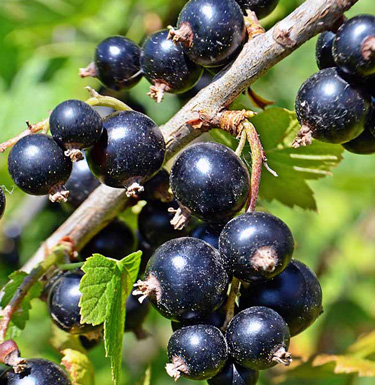
Black currants
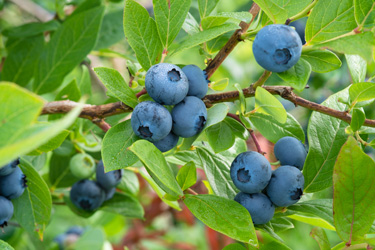
Blueberries
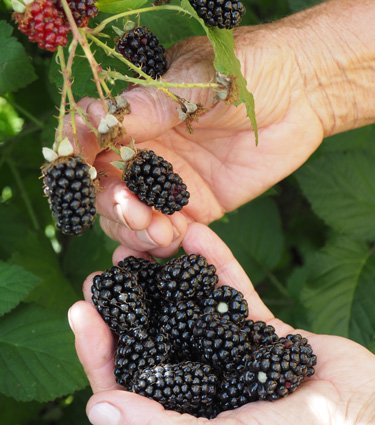
Blackberries
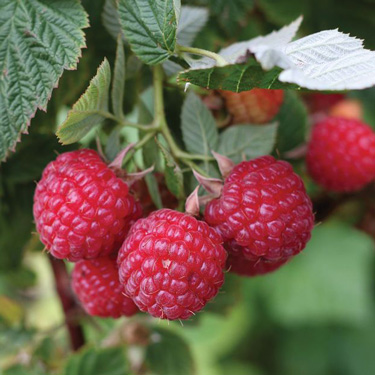
Raspberries
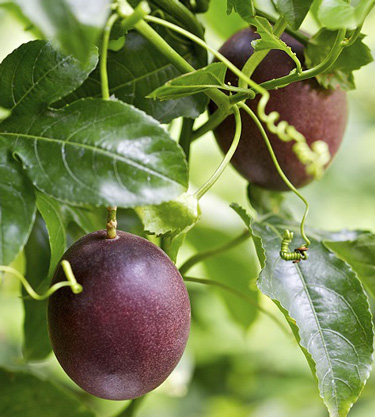
Passionfruit
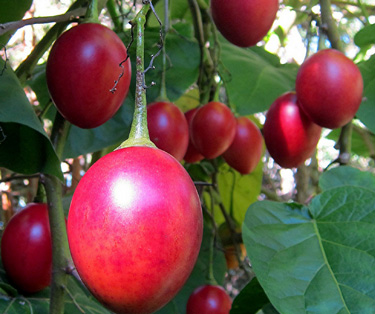
Tamarillo
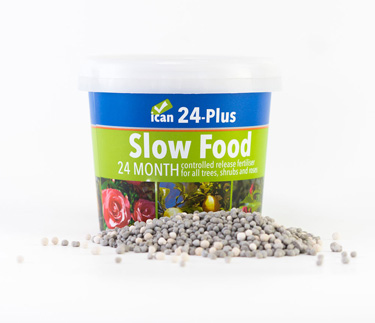
ican Slow Food, perfect for feeding berry fruits, for up to 24 months. Available from your local ican garden centre.

